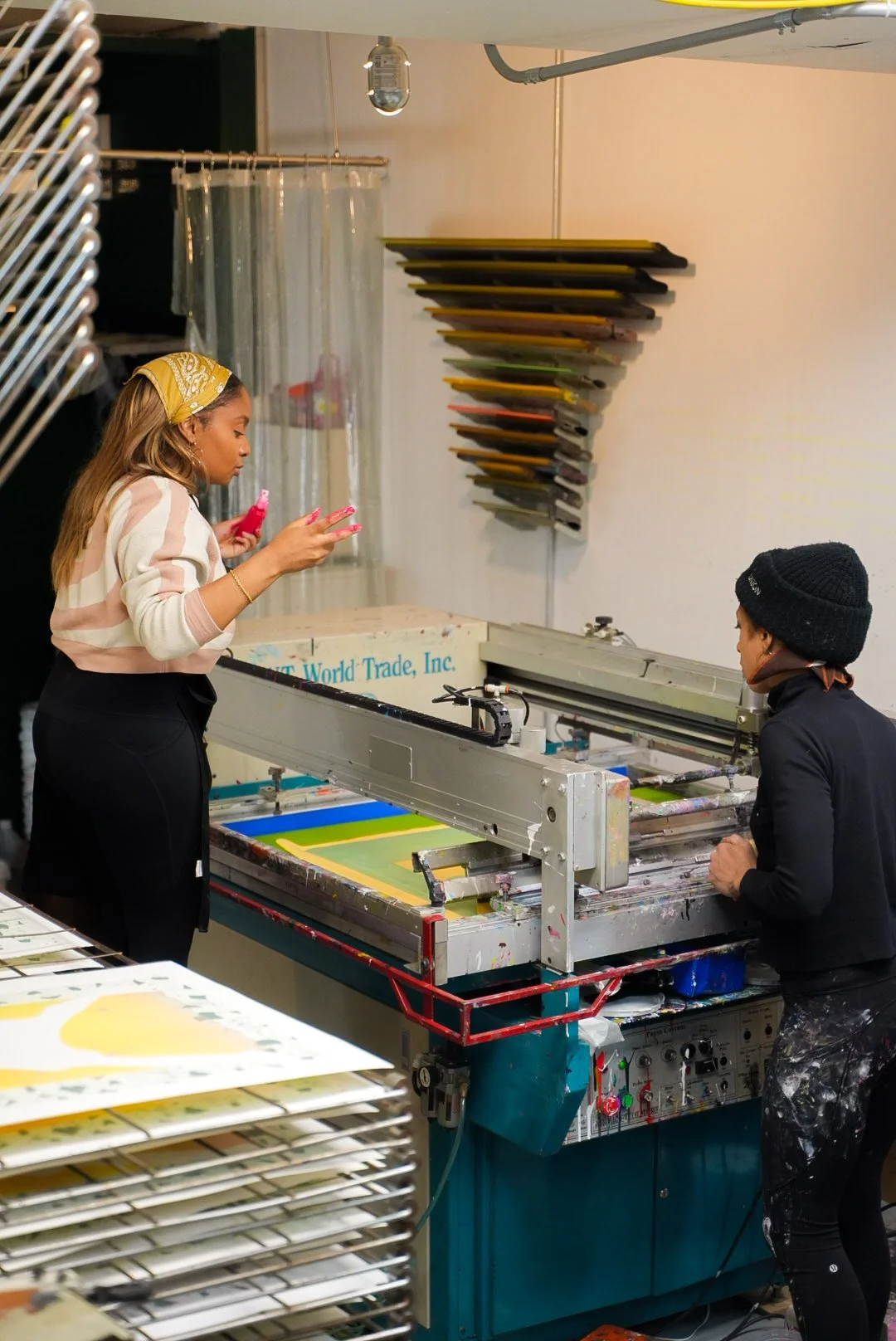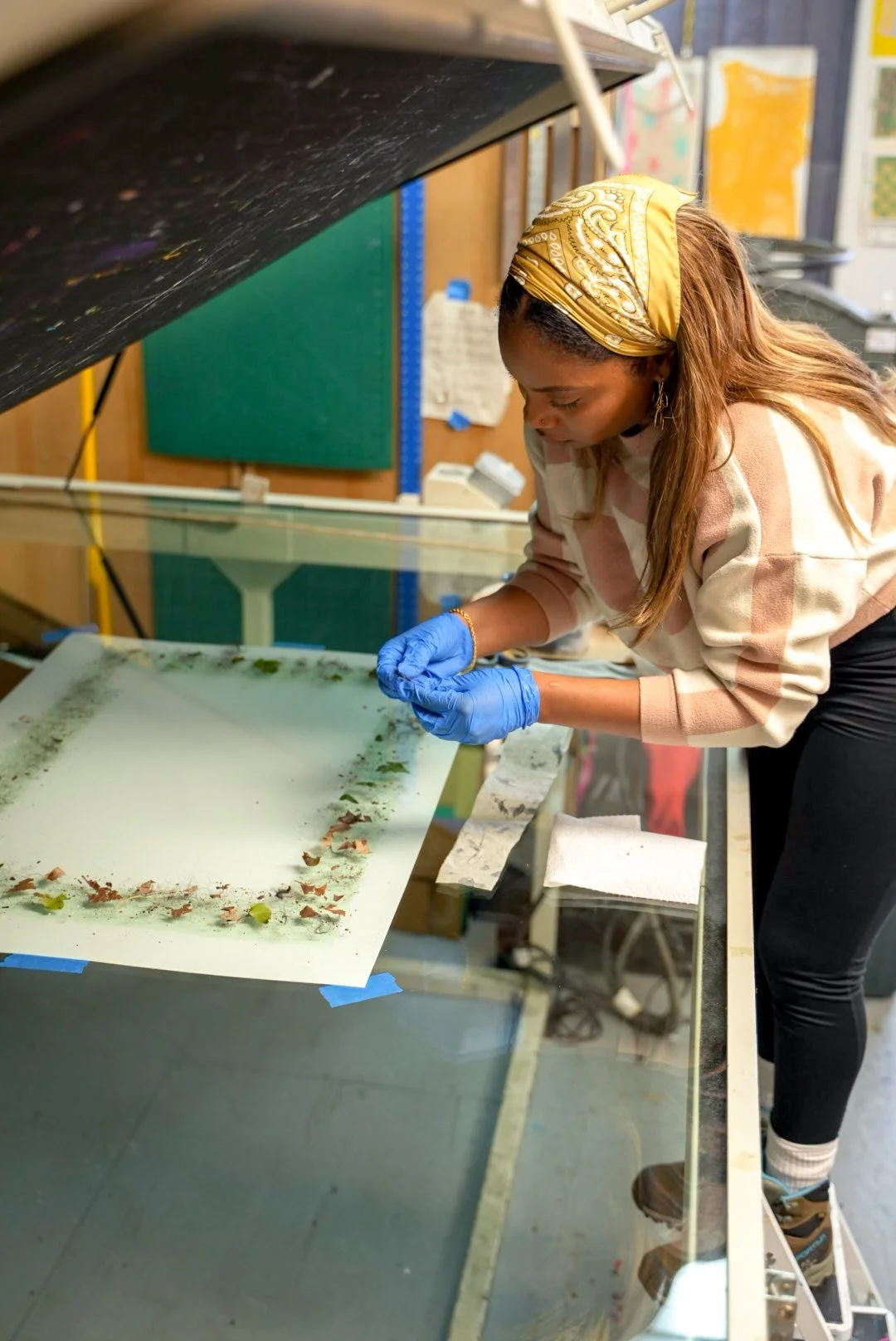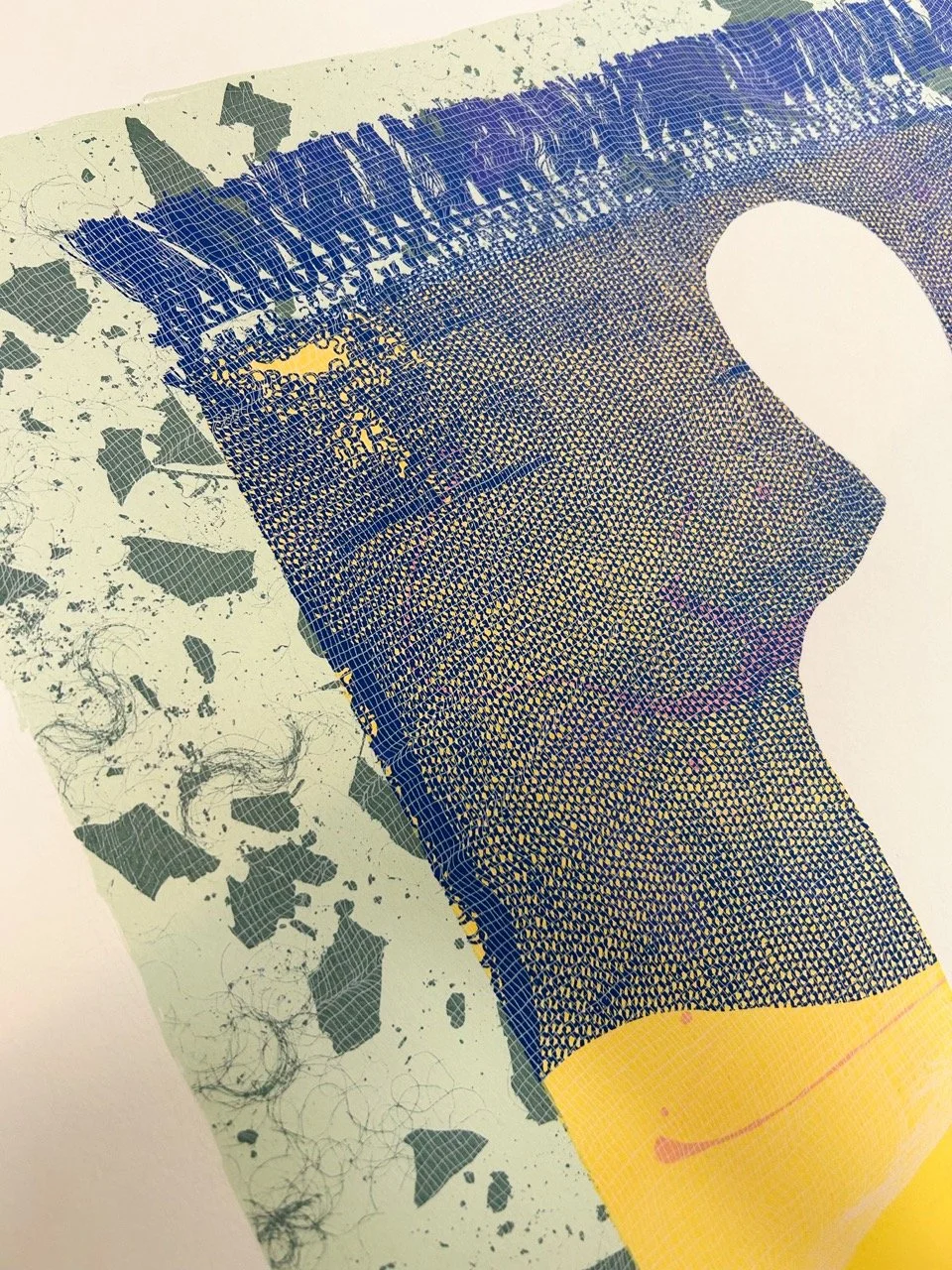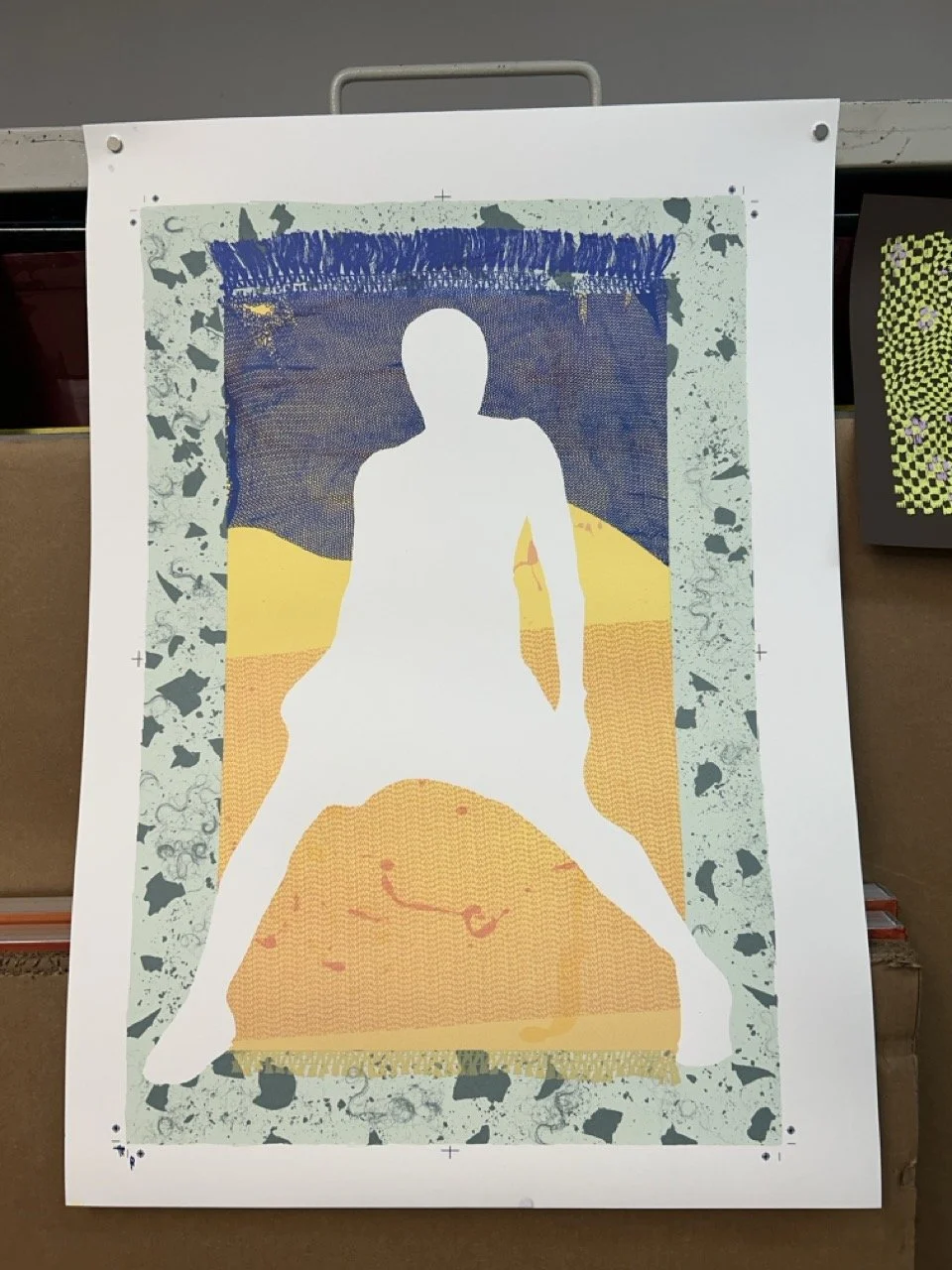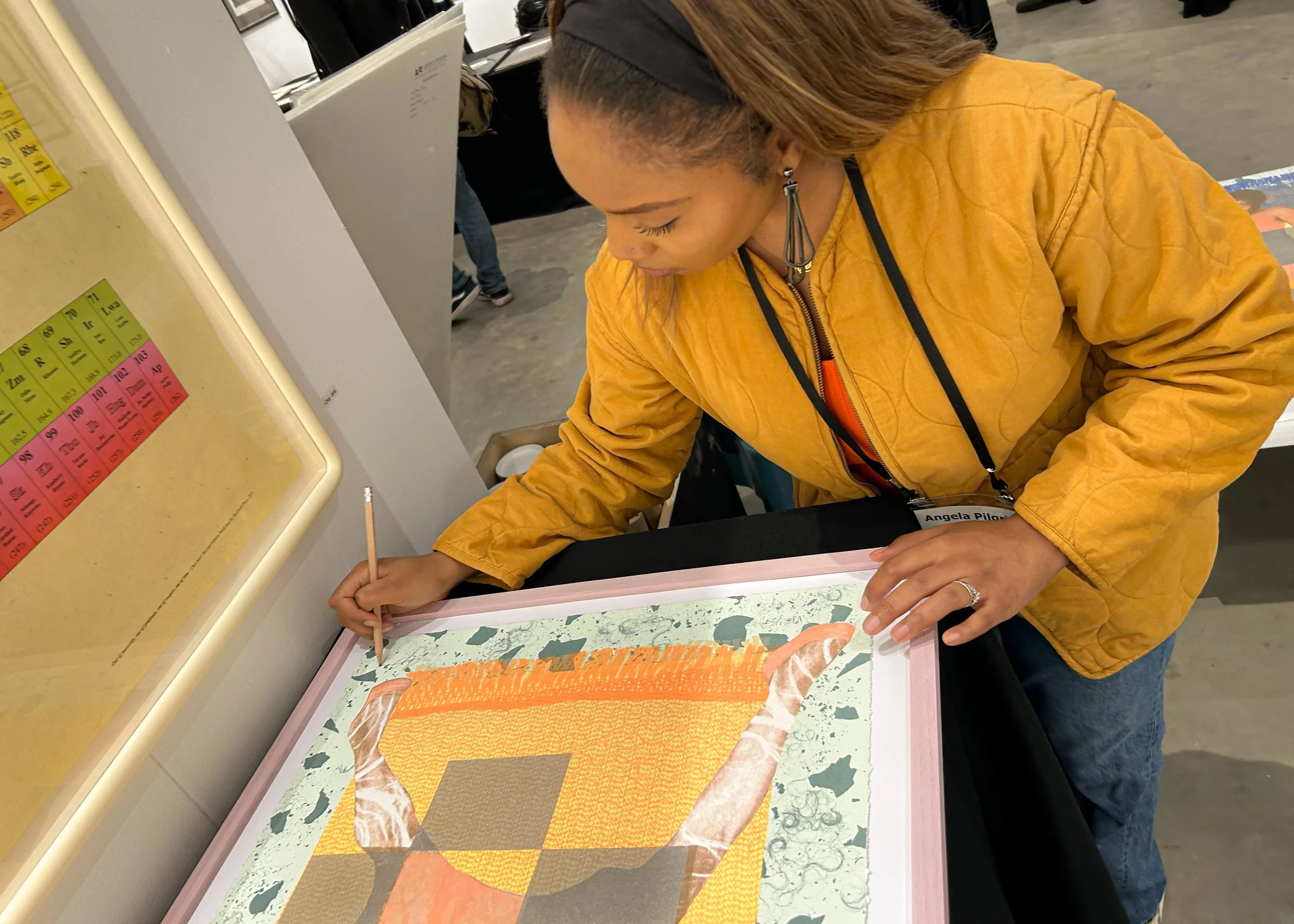A Little Off the Grid by Angela Pilgrim. Published by Du-Good Press, 2025.
A Little Off the Grid
By Angela Pilgrim
30 x 20 inch 12 Color Screenprint
on 320gsm Coventry Rag with Deckled Edge
Variable Edition of 28
Published by Du-Good Press, 2025.
Available through Du- Good Press:
du-goodpress.com/angelapilgrim

Two young girls are working on creating art projects in an art studio, focusing on a large piece of artwork that features a rainbow-colored outline. One girl is drawing on the artwork with a marker while the other is observing. The room is filled with art supplies and materials.



